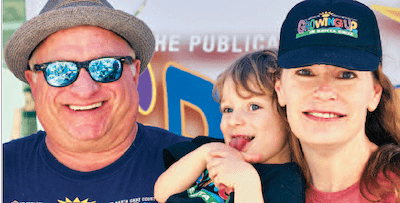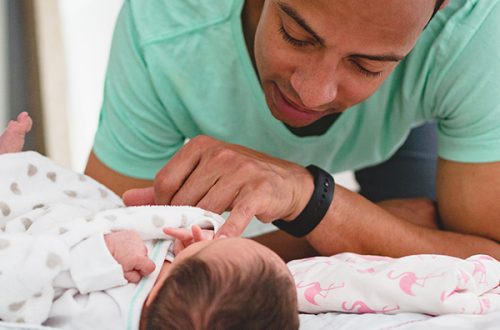Before I had a grandchild, much of my internet searching started with a headache that quickly escalated to the most common symptoms of a brain tumor, or the discovery that one of the side effects of a new medication is death.
Now that I’m a grandmother, my searches and the results are a bit more cheerful, but they can still send me down a rabbit hole.
The rabbit hole is where I learned that there is a condition called Obsessive Grandmother Syndrome and a style called Coastal Grandma. And where I learned that I might have Obsessive Coastal Grandma Style Syndrome (OCGSS). And yes, my granddaughter’s big head does mean she has a lot of brains, but it doesn’t mean I can brag about her nonstop.
The rabbit hole is also where I found out that there are four or six kinds of grandparents (depending on the website) and five stages of pretend play.
A few months ago, when my then one-year-old granddaughter started to pretend that she was drinking from a tiny toy teacup and stirring her imaginary beverage with a spoon, I thought it was a bit early for this type of play. And because I will always jump to the conclusion that she is a little genius; I googled the average age that pretend play starts.
And just as with my self-diagnosed brain tumor, the results were illuminating. It turns out she’s not just pretending; she’s developing important cognitive skills. Of course she is! And if I was opening a preschool or writing a thesis this could be helpful information. But I’m just a grandmother, trying to confirm that my grandchild is above average. A simple yes is all I am looking for.
Of all the things to analyze and categorize pretending seems the most absurd. Pretending is magic and make believe and imagination. Leave it to grownups to take all the fun out of fun!
But since I can’t unknow what I have learned, I pass my knowledge on to you in the hopes that when your grandchild offers you your first bite of imaginary cake you won’t have to pretend that you don’t know that something truly amazing is happening in her brain (and you won’t have to google it!)
The first stage of pretend play is called Enactive Naming, in this stage your above average grandchild is not actively pretending. She is simply showing you the knowledge she has, i.e., cups are for drinking from.
In the second stage called Autosymbolic Schemes, your little genius is displaying the first signs of pretending, but only in relation to herself. In other words, she’s not ready to share her pretend tea. Decentred Symbolic Schemes is the third stage
This is when she brings others into her web of pretend play (note: in this stage grandma is also engaged in pretend play as she is pretending to enjoy drinking her twelfth cup of tea).
The next stage is called Sequencing Pretend Acts. Here she learns to apply a logical sequence to her pretending. For instance, if she wants to give dolly a bath, she will take its clothes off first or, more likely, get grandma to take the clothes off for her (as we’ve already established, she’s no dummy).
The final and most sophisticated form of pretending is Planned Pretend. At this stage your brainiac will collect props and items needed for her pretend play.
Now if all this has made your head hurt, there’s no need to panic. It’s not a brain tumor. Take two aspirin and go have another cup of tea!
If you are enjoying my column or have a topic you’d like me to write about, I’d love to hear from you at [email protected].








2 Comments
Enid Brock
Another excellent grandparenting column from Sarah Savasky. She never fails to surprise, illuminate, and inform!
Paula Mahoney
I can always count on a satisfying chuckle from Sarah’s sweet and illuminating take on grandparenting.